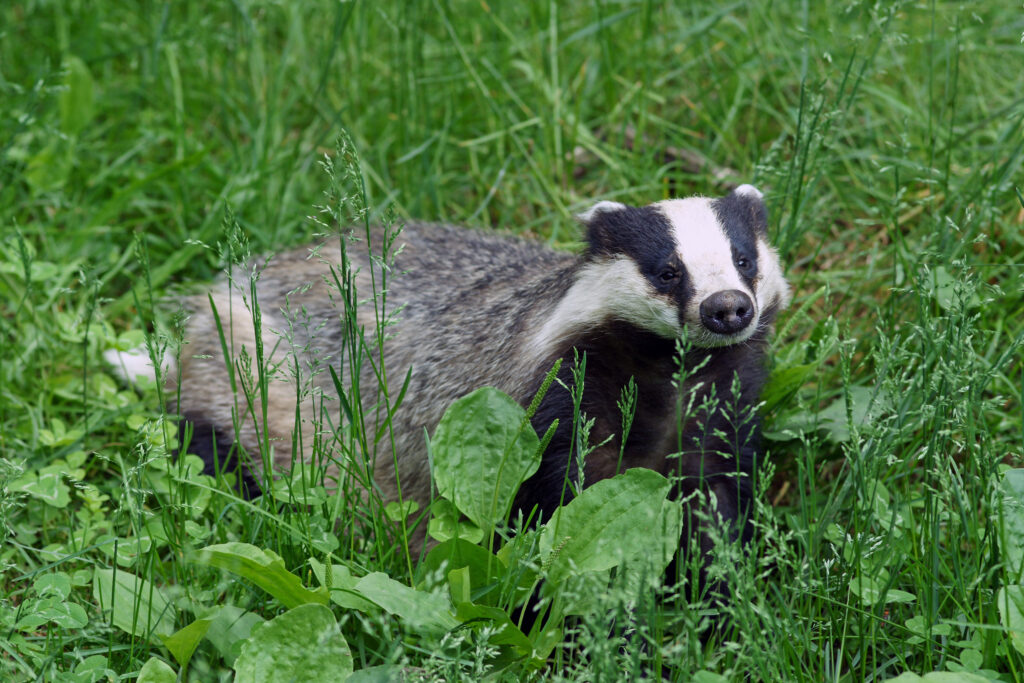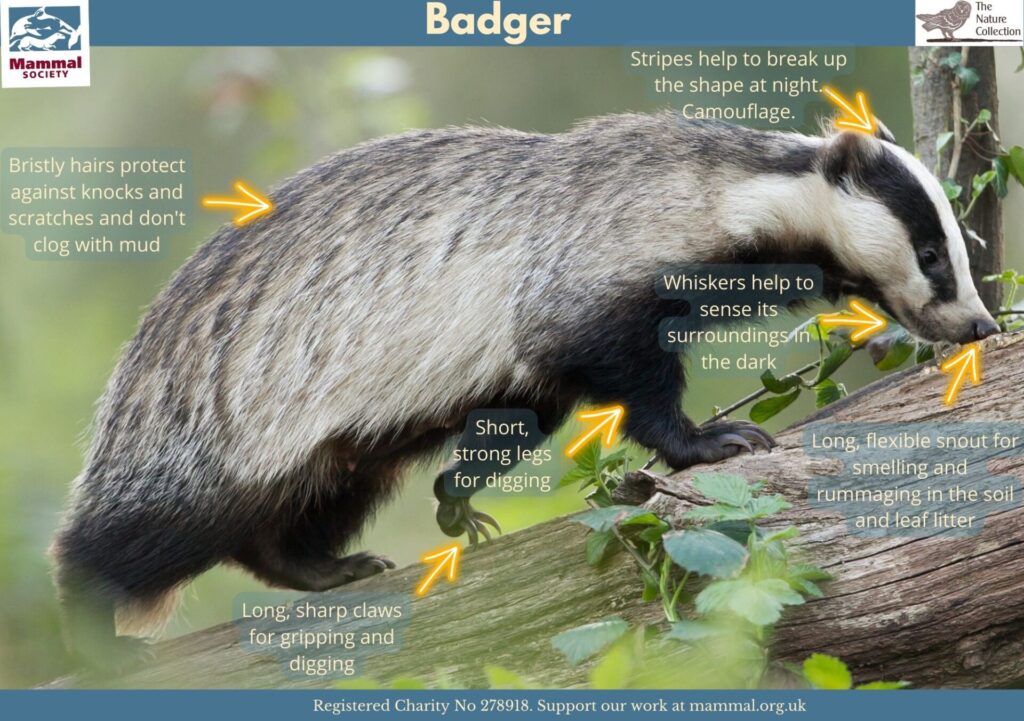Are badgers aggressive and dangerous?

Badgers are primarily solitary creatures that are territorial and protective of their homes and food sources. When threatened or cornered, they may display defensive behaviors, including vocalizations, posturing, or, in extreme cases, physical aggression.
What is a Badger
Badgers, belonging to the family Mustelidae, share traits with other members of this family, such as otters, weasels, and ferrets. Their physical appearance is marked by a stout and compact build, with short legs and a low-slung body profile.
One of the most distinctive features of the badger is its striking facial markings. Most species of badgers sport a bold black and white striped pattern on their faces, which serves as a form of visual communication within their species. These markings are thought to play a role in identifying individuals and may also serve as a deterrent to potential predators.
Badgers are well-adapted for their subterranean lifestyle, with powerful forelimbs equipped with sharp claws that enable them to excavate burrows and dig for food. Their fur is coarse and thick, providing insulation against the cold and protection from abrasions while navigating through underground tunnels.
Lonely Hunters
In terms of behavior, badgers are primarily nocturnal, preferring to forage and hunt under the cover of darkness. This nocturnal lifestyle helps them avoid potential predators and allows them to capitalize on the abundance of prey that is also active during the night. Despite their solitary nature, badgers may form small family groups consisting of a breeding pair and their offspring, particularly during the breeding season.
Badgers are opportunistic omnivores, with a diet that varies depending on factors such as habitat and season. They primarily feed on small mammals such as rodents and rabbits but may also consume insects, fruits, and roots. Their strong sense of smell and sharp claws make them proficient hunters and foragers, capable of locating and extracting food from a variety of sources.
In addition to their hunting and foraging abilities, badgers are also skilled excavators, capable of constructing elaborate underground burrow systems known as setts. These setts serve as shelter, breeding sites, and food storage areas for badgers, providing them with a secure refuge from predators and harsh weather conditions.
Why a badger becomes aggressive
While badgers are often portrayed as aggressive animals, particularly in popular media, the reality is more nuanced. Like many wild animals, badgers are protective of their territories and may display aggressive behavior when threatened or provoked. However, aggression in badgers is typically defensive rather than predatory in nature, driven by the need to defend themselves, their offspring, or their territory.
When confronted with a perceived threat, such as a potential predator or an intruding conspecific, a badger may exhibit a range of defensive behaviors. These can include vocalizations such as growls, hisses, or snarls, designed to intimidate the threat and deter further aggression. Additionally, badgers may adopt aggressive postures, such as arching their backs, raising their hackles, or baring their teeth, as a warning signal to potential adversaries.
In some cases, defensive aggression in badgers may escalate to physical combat, particularly if the threat persists or if resources such as food or shelter are at stake. Badgers possess powerful jaws and sharp claws, which they may use to fend off attackers or engage in intra-specific conflicts with rival individuals. These confrontations are usually brief and serve to establish dominance hierarchies or resolve territorial disputes rather than cause serious injury.
What Makes a Badger Aggressive
Several factors can influence the behavior of badgers. Environmental factors such as habitat type, food availability, and weather conditions play a significant role in shaping badger behavior. Badgers are highly adaptable animals, capable of thriving in a variety of habitats ranging from woodlands and grasslands to urban areas.
However, changes to their natural habitat, such as deforestation or urban development, can disrupt their foraging patterns and territorial behavior, leading to increased stress and potential conflicts with humans.
While badgers are primarily solitary animals, they do exhibit complex social behaviors, particularly during the breeding season. Breeding pairs may form temporary alliances with neighboring individuals, known as “clans”, to defend territories and share resources. Within these social groups, hierarchies may develop, with dominant individuals asserting control over access to food and mating opportunities.
Like humans, badgers exhibit individual differences in temperament and behavior. Factors such as age, sex, and reproductive status can influence an individual’s likelihood of engaging in aggressive behavior. For example, younger male badgers may be more prone to aggression as they establish their dominance within the social hierarchy, while females with dependent young may be more protective of their offspring and exhibit defensive behavior in the face of perceived threats.

How a badger can hurt you
Badgers are powerful animals with sharp claws and teeth, capable of defending themselves if they feel threatened or cornered. Although encounters between humans and badgers are relatively rare, it’s important to understand the potential risks associated with interacting with these wild mammals.
Claws and Teeth
One of the primary ways a badger can hurt you is through its claws and teeth. Badgers have sharp, curved claws adapted for digging and hunting, which they can use defensively if they feel threatened. Their teeth are also sharp and can deliver a painful bite if provoked. While badgers are not typically aggressive towards humans, they may lash out if cornered or provoked, potentially causing injury.
Defensive Behavior
When threatened, badgers may exhibit defensive behavior, such as growling, hissing, or emitting warning vocalizations. They may also adopt aggressive postures, such as raising their hackles or baring their teeth, to deter potential threats. While these behaviors are primarily defensive in nature, they can escalate into physical aggression if the perceived threat persists.
Rabies Risk
Like many wild animals, badgers can carry diseases that can be transmitted to humans, including rabies. Rabies is a viral disease that affects the central nervous system and is typically transmitted through the bite of an infected animal. While cases of rabies transmission from badgers to humans are rare, it’s essential to exercise caution when encountering wild animals and to seek medical attention if bitten or scratched.










